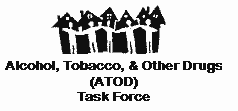|
"While long-run conditions may favor
growing more corn and fewer soybeans in Illinois, planning prices
for 2004 harvest time do not suggest shifting more acres to corn,
particularly for northern and southern Illinois," said Gary
Schnitkey, a U of I Extension farm management specialist who wrote
the report "Projected and Historical Crop Returns: Keep Soybeans in
2004."
The report, which appears in the "Farm
Economics: Facts and Opinions" portion of the Farmdoc website, may
be viewed at
http://www.farmdoc.uiuc.edu/manage/
newsletters/fefo03_19/fefo03_19.html.
Using data from the Illinois Farm
Business Farm Management Association, Schnitkey examined crop
revenue performance for northern, central and southern Illinois
after subtracting variable costs for corn, soybeans and wheat.
"The projections for 2004 are based on
five-year average yields and commodity prices of $2.25 for corn,
$5.70 for soybeans and $3.40 for wheat," he said. "These prices were
determined by subtracting basis from prices for Chicago Board of
Trade futures contracts."
[to top of second column in
this article]

|

Schnitkey's study indicated a 2004
switch to more soybean acres may not be a profitable option.
"Projected returns from corn, soybeans
and wheat for northern, central and southern Illinois do not suggest
large shifts away from soybeans to corn," he said. "For northern
Illinois, a one-half corn/one-half soybeans rotation is projected to
be the most profitable.
"For central Illinois, planting corn
following corn may increase profits; however, there may be long-run
reductions in returns due to increasing the percentage of corn in
the rotation.
"For southern Illinois, soybeans are
projected to be more profitable than corn. Wheat with double-crop
soybeans is an attractive alternative."
He noted that the projections could be
altered by changes in either relative yields or relative prices.
"Based on
historical returns, including higher percentages of corn in a
rotation is likely to increase the variability of returns," he said.
"If more corn is included in the 2004 rotation, it would be prudent
to consider countering this increase in risk by increasing crop
insurance coverage or by increasing use of pre-harvest hedging."
[University
of Illinois news release]
|